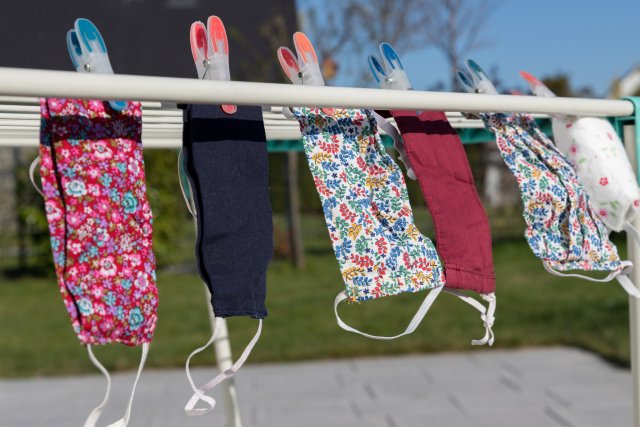Evaluating the Effectiveness of Facial Coverings and Masks
Despite widespread adoption of face mask use for personal protection and to help stop the spread of COVID-19, there is little or no public information available on the performance and efficacy of different types of masks or modifications on existing face coverings. Important questions, such as which type of mask to buy or make, what modifications can be made to disposable medical-grade surgical masks and other face coverings, or the compatibility of facial hair with protective face coverings, remain. EPA researchers are working to answer these and other questions.
In a series of projects started at the request of University of North Carolina (UNC) Hospitals in Chapel Hill, North Carolina, EPA investigators collaborated with the university to test face masks and Personal Protective Equipment (PPE). They are:
- Providing a relative comparison of fitted filtering efficiency on improvised, disposable and reusable face coverings used as personal protective equipment during the COVID-19 pandemic.
- Evaluating the efficacy of popular modifications reported to increase the efficiency of disposable surgical and procedure masks worn by the public during the COVID-19 pandemic.
- Examining the relative performance of protective facial coverings against the SARS-CoV-2 virus for people with beards, including an interventional approach to improve filtering efficiency for those who grow beards as a personal, religious, cultural or medical necessity.
-

The research is helping to inform public health professionals and the general public on the level of protection provided by cloth and other improvised face masks. Knowing how certain mask materials and modifications filter out viral particles allows individuals to choose the best options to protect themselves and others. Additionally, the research on the efficacy of used and expired N95 respirators can help inform hospital infection control best practices in cases of PPE shortages.
Double Masking Study Results Published
EPA, along with their co-authors at UNC, recently published an article titled “Fitted Filtration Efficiency of Double Masking During the COVID-19 Pandemic”in JAMA Internal Medicine. With global vaccination efforts against SARS-CoV-2 rapidly increasing, public health officials have continued to encourage the use of face masks to mitigate virus transmission. The article addresses the limitations of a previous study done by US Centers for Disease Control and Prevention (CDC), which reported that wearing two masks increased the effectiveness of preventing spread of COVID-19. This study considers the limitations of the CDC’s research on type and combinations of different masks as well as the CDC’s use of head forms rather than humans. This study compared the fitted filtration efficiency (FFE) of the most widely available masks worn singly, doubled, or in combinations.
Results demonstrated that the most significant improvement to FFE occurred from the combination of a medical procedure mask worn underneath a cloth mask, out of all combinations considered.
